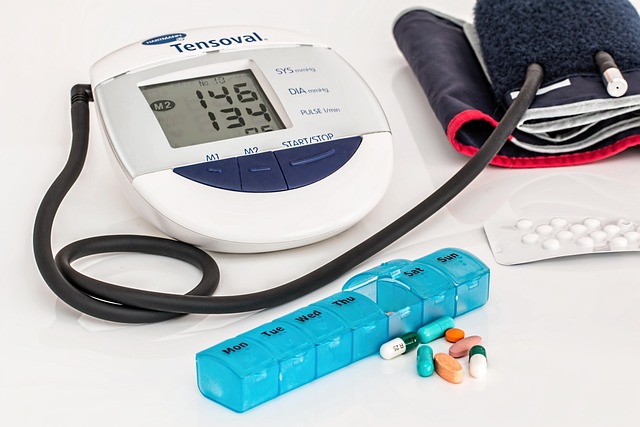Comparing Hormonal Ring Methods: What You Need to Know
Hormonal vaginal rings offer a convenient and effective form of contraception for many women. These flexible, transparent rings are inserted into the vagina to release hormones that prevent pregnancy. Understanding the available options, how they work, and what distinguishes one from another can help you make an informed decision about whether this method suits your lifestyle and health needs.

Hormonal vaginal rings represent a popular contraceptive choice that combines effectiveness with ease of use. Unlike daily pills, the ring requires insertion just once a month, making it an appealing option for those seeking reliable pregnancy prevention without daily reminders. This method works by releasing synthetic hormones that prevent ovulation, thicken cervical mucus, and thin the uterine lining.
How Does the Birth Control Ring Work?
The vaginal birth control ring is a small, flexible device approximately two inches in diameter. Once inserted into the vagina, it releases a steady dose of estrogen and progestin directly into the bloodstream. These hormones work together to suppress ovulation, ensuring that no egg is released during your menstrual cycle. Additionally, the hormones create a hostile environment for sperm by thickening cervical mucus, making it difficult for sperm to reach any egg that might be released. The ring remains in place for three weeks, followed by a one-week ring-free period during which withdrawal bleeding typically occurs.
What Birth Control Ring Options Are Available?
Currently, the most widely recognized hormonal vaginal ring available in the United States is NuvaRing, which has been on the market since 2001. A generic version, known as EluRyng, became available in recent years, offering a more affordable alternative with the same active ingredients and mechanism of action. Both rings contain etonogestrel and ethinyl estradiol, and they function identically in terms of effectiveness and usage. Another option that has entered the market is Annovera, a reusable ring that can be used for an entire year with proper care and storage. Unlike NuvaRing and EluRyng, Annovera contains segesterone acetate and ethinyl estradiol, offering a different hormonal combination while maintaining similar efficacy.
Comparing Different Vaginal Birth Control Ring Options
When evaluating birth control ring options, several factors come into play, including cost, convenience, hormonal composition, and personal preference. Understanding the differences between available products can help you choose the method that aligns with your needs.
| Product Name | Manufacturer | Key Features | Cost Estimation |
|---|---|---|---|
| NuvaRing | Organon | Monthly disposable ring, widely available, established track record | $150-$200 per month without insurance |
| EluRyng | Amneal Pharmaceuticals | Generic version of NuvaRing, same hormones and effectiveness | $75-$150 per month without insurance |
| Annovera | TherapeuticsMD | Reusable for one year, different hormone combination, eco-friendly | $2,000-$2,400 annually without insurance |
Prices, rates, or cost estimates mentioned in this article are based on the latest available information but may change over time. Independent research is advised before making financial decisions.
What Are the Benefits of Using a Birth Control Ring?
The vaginal birth control ring offers several advantages that make it a preferred choice for many users. One of the primary benefits is convenience. Unlike oral contraceptives that require daily attention, the ring only needs to be replaced once a month, reducing the risk of user error. The ring also delivers hormones locally, which may result in fewer systemic side effects compared to oral pills. Additionally, the ring does not interfere with sexual activity for most users, and it can be temporarily removed for up to three hours without compromising effectiveness. Many users also appreciate the potential for lighter, more regular periods and reduced menstrual cramping.
Are There Any Side Effects or Considerations?
Like all hormonal contraceptives, vaginal rings can cause side effects, though not everyone experiences them. Common side effects include vaginal irritation, increased vaginal discharge, headaches, nausea, breast tenderness, and mood changes. Some users may also experience breakthrough bleeding, especially during the first few months of use. Serious but rare risks include blood clots, stroke, and heart attack, particularly in users who smoke, are over 35, or have certain medical conditions. It is important to discuss your medical history with a healthcare provider before starting any hormonal contraceptive method. The ring is not suitable for everyone, particularly those with a history of blood clots, certain cancers, or uncontrolled high blood pressure.
How Do You Use a Vaginal Birth Control Ring?
Using a birth control ring is straightforward, but proper insertion and removal are essential for effectiveness. To insert the ring, squeeze it between your thumb and index finger and gently push it into the vagina. The exact position is not critical, as long as it is comfortable. The ring should remain in place for three consecutive weeks. After three weeks, remove the ring by hooking your finger under the rim and pulling it out. Dispose of it properly in a waste receptacle, not in the toilet. After a one-week break, insert a new ring to continue contraceptive protection. If using Annovera, the same ring is washed, stored, and reinserted after the ring-free week.
Choosing the right contraceptive method is a personal decision that depends on your health, lifestyle, and preferences. Hormonal vaginal rings offer a reliable, convenient, and effective option for pregnancy prevention. By understanding the available products, their features, and potential side effects, you can make an informed choice that supports your reproductive health goals. Always consult with a healthcare provider to determine the most appropriate contraceptive method for your individual needs.
This article is for informational purposes only and should not be considered medical advice. Please consult a qualified healthcare professional for personalized guidance and treatment.




